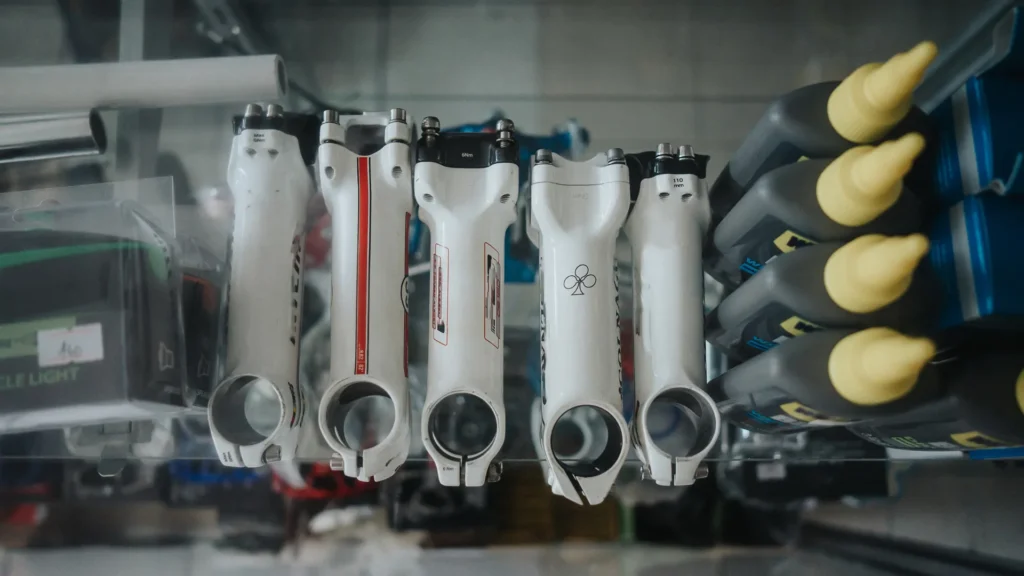Overcoming Overstock: Turning Surplus into Success
Overstock can occur for a variety of reasons – from overestimating customer demand to unexpected changes in market trends. While the sight of surplus bikes gathering dust in your store might seem daunting, there are strategic ways to transform this challenge into an opportunity.
Sales and Promotions: The Classic Route
The tried-and-true method of running sales and promotions can help you move excess stock quickly. Offering a discount on surplus models, particularly when newer versions are introduced, can attract bargain hunters and cycling enthusiasts alike.
You can also consider bundling strategies. By pairing an overstocked item with a fast-moving accessory or offering a “buy one get one” deal, you can provide value to customers while clearing your stock.
Partnerships and Collaborations: Building Community Ties
If you have surplus stock, consider reaching out to local community organisations, charities, or schools. Donating a few bikes for a community event or a local school can not only help you clear your inventory but also strengthen your brand’s reputation in the local community.
In addition, you could consider collaborating with local cycling clubs or event organisers. Offering surplus stock as prizes or for use in events can increase your shop’s visibility and generate goodwill.
Long-term Storage: Playing the Waiting Game
Long-term storage could be an option when your overstock consists of items that don’t become obsolete or go out of style. This allows you to hold onto the stock until demand increases or until you can find a suitable alternative outlet for these items. However, this should be a last resort, considering the additional storage costs and the capital tied up in the stored items.

Avoiding Understock: Ensuring Availability to Drive Sales
On the other side of the coin, understock can lead to lost sales and frustrated customers who can’t find what they need. Here’s how to keep your shop stocked and ready for business:
Accurate Forecasting: The Crystal Ball of Retail
Accurate demand forecasting is crucial for avoiding understock. You can use historical sales data, evaluate market trends, and take into account customer feedback to estimate future demand. This becomes especially important when you consider seasonal trends. For example, are there particular times of the year when demand for certain models or cycling accessories spikes?
Vendor Relationships: Nurturing Your Supply Chain
Building strong relationships with your suppliers can go a long way in ensuring a steady supply of products. Vendors are more likely to go the extra mile for businesses they have good relationships with, especially in times of high demand or supply chain disruptions.
To build these relationships, communicate regularly with your suppliers, provide feedback, and pay invoices promptly. It’s also worth exploring exclusive deals or priority agreements with your most trusted suppliers.
Safety Stock: Your Buffer Against the Unexpected
Keeping safety stock, an extra quantity of your best-selling items can protect you against sudden demand surges or supply chain disruptions. While maintaining safety stock requires additional investment, it can save you from the potential loss of sales and customer dissatisfaction that comes with running out of stock.
Inventory Management Systems: The Digital Balancing Act
Modern inventory management systems can be a lifesaver when it comes to managing stock levels. These tools can track sales, monitor stock levels in real-time, and even automate reordering to ensure you never run out of your best sellers.
Some inventory management systems also offer predictive analytics features, allowing for more accurate demand forecasting based on historical data and market trends. By harnessing this technology, you can move from reactive inventory management to a more proactive approach.
The Bottom Line: Striking a Balance for Success
In the end, the art of inventory management comes down to striking the right balance. Having enough stock on hand to meet demand without tying up resources in excess inventory is a challenge all bicycle retailers face.
While overstock and understock situations can seem daunting, they also present opportunities. By implementing proactive planning, strategic decision-making, and effectively using technology, you can turn these potential pitfalls into strategic advantages.
Remember, both overstock and understock situations are manageable with the right strategies and tools. It’s about keeping your inventory in check, your customers satisfied, and your business pedalling smoothly towards success. By mastering these areas, bicycle retailers can confidently navigate the inventory management landscape and ensure a successful, profitable business.



